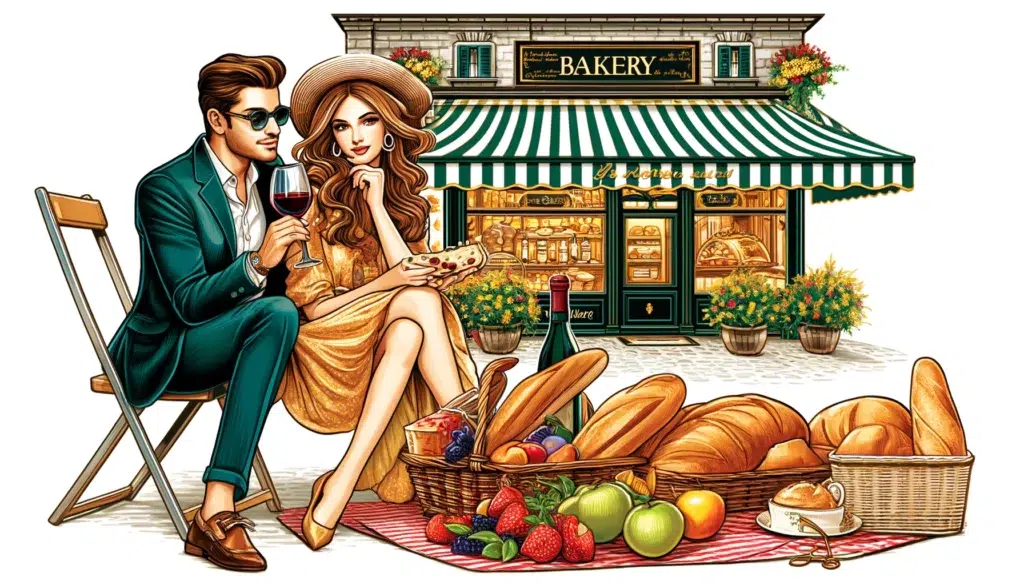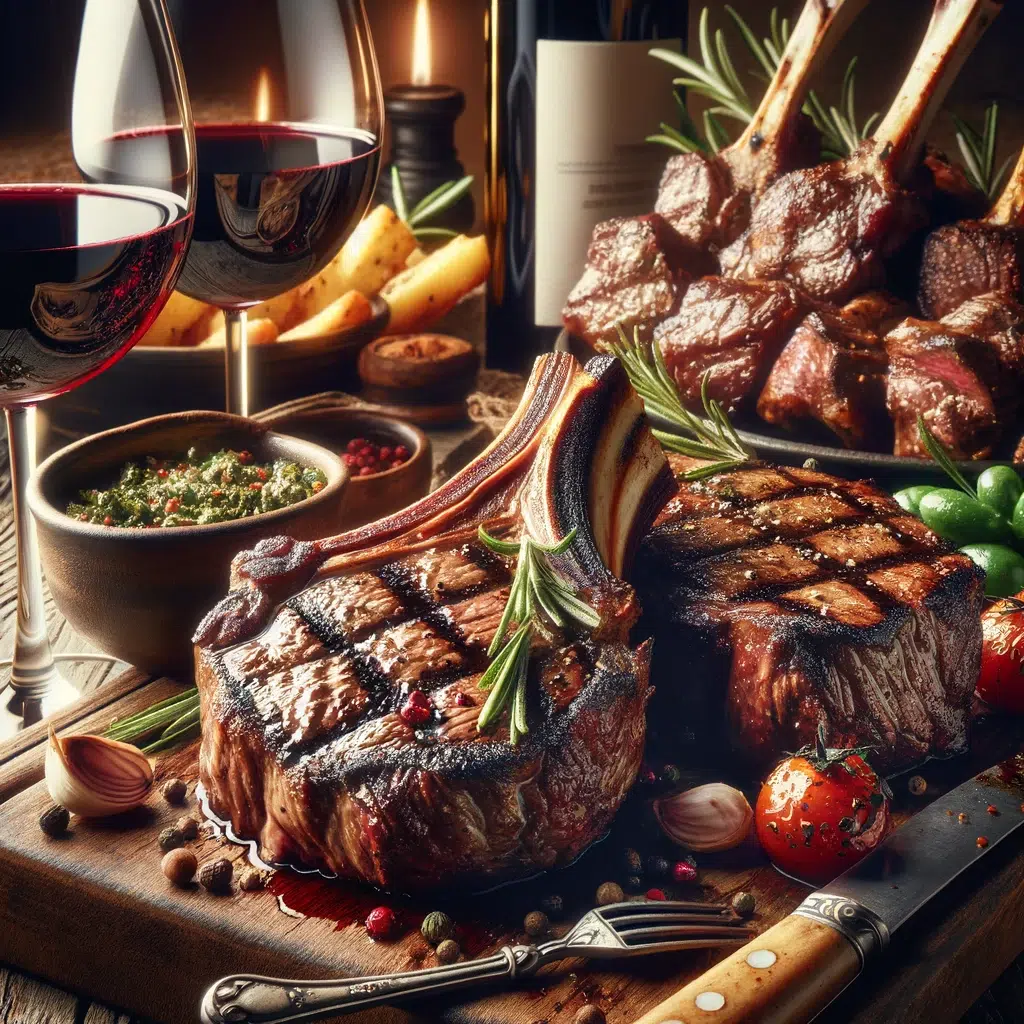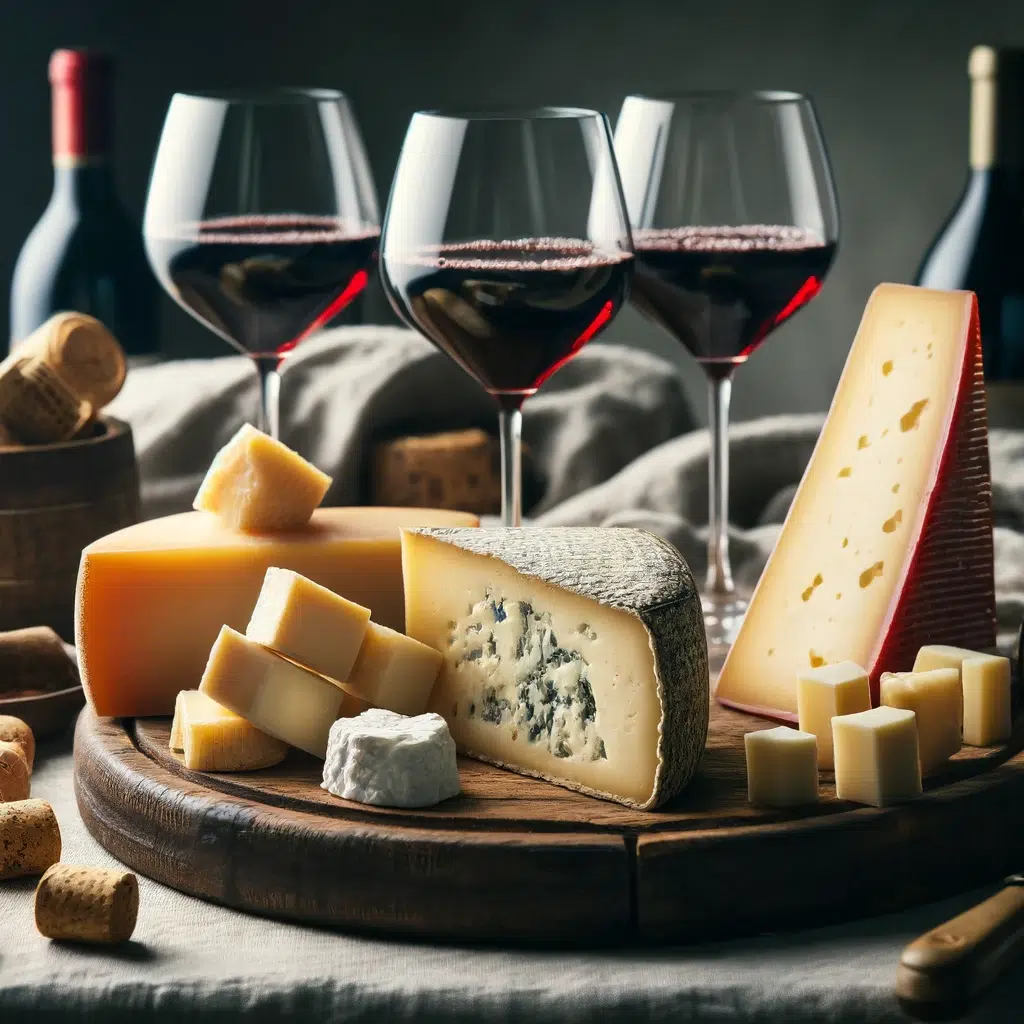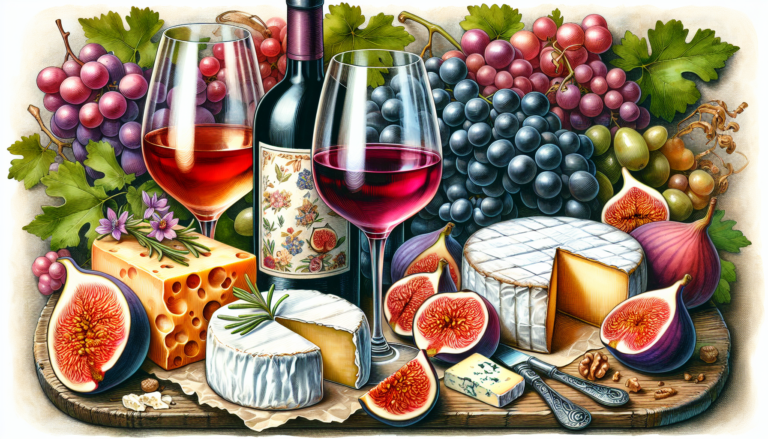Breaking down the good red wine Italy produces
— Sean K contributed to this post; you can read more about him on the About page.–
Hey there, wine lover! The world of Italian red wine can seem overwhelming, but I’m here to break it down. I’ve sipped my way through the good red wine Italy boasts from the Alps to the islands, and I’ll help you find some to make your taste buds hungry thirsty for more. Italy’s wines are perfect for adding a touch of la dolce vita to any occasion, and they deserve a place in the wine cellar.
I’m talking about Chianti Classico, the time-honored icon. Montepulciano d’Abruzzo, the favorite from the Adriatic coast. And let’s not forget those red blends known as Super Tuscans, an example of good red wine Italy innovated to international acclaim. These are just a few of the stars.
So grab a glass, and let’s embark on this delicious adventure together. Trust me, your palate will thank you. Salute!
Table of Contents
The 5 Best Italian Red Wines for Beginners

When I first started exploring the world of Italian red wine, I felt overwhelmed. With hundreds of recognized native grape varieties and a complex classification system, it’s easy to get lost in a sea of unfamiliar names. But after years of tasting and learning, I’ve discovered that the best way to dive into Italian reds is to start with a few key styles.
Chianti Classico, Valpolicella, Montepulciano d’Abruzzo, Barbera d’Asti, Nero d’Avola
These five Italian red wines perfectly introduce the country’s diverse wine scene.
Chianti Classico, from the heart of Tuscany, showcases the Sangiovese grape’s bright cherry flavors and firm tannins Tannins in Wine Tannins in wine are phen... More. It’s a classic pairing for tomato-based pasta dishes.
Tannins in Wine Tannins in wine are phen... More. It’s a classic pairing for tomato-based pasta dishes.
Valpolicella, from the Veneto region, is known for its light body and easy-drinking style. Made from a blend of local grapes like Corvina and Rondinella, it’s a great match for antipasti or pizza.
Montepulciano d’Abruzzo, not to be confused with the Montepulciano grape, hails from the rugged hills of Abruzzo. This medium-bodied red bursts with juicy plum and herb notes, perfect for sipping alongside a hearty meat ragu.
Barbera d’Asti, from Piedmont, is loved for its deep color, low tannins Tannins in Wine Tannins in wine are phen... More, and high acidity. With blackberry and spice flavors, it’s a food-friendly option that pairs well with everything from pasta to grilled sausages. And finally:
Tannins in Wine Tannins in wine are phen... More, and high acidity. With blackberry and spice flavors, it’s a food-friendly option that pairs well with everything from pasta to grilled sausages. And finally:
Nero d’Avola is the pride of Sicily. This full-bodied red has ripe fruit flavors and a hint of licorice. It’s bold enough to stand up to rich meat dishes but also shines with simple pasta or pizza.
Exploring Italy’s Most Famous Red Wine Regions
Appreciating the diversity of Italian red wine helps one understand the country’s key wine regions. Each area has unique grapes, winemaking traditions, and flavor profiles.
Tuscany, Piedmont, Veneto, Abruzzo, Sicily

Tuscany is home to some of Italy’s most iconic reds
Reds like Chianti Classico, Brunello di Montalcino, and Vino Nobile di Montepulciano. These wines are all based on Sangiovese—the country’s most planted wine grape—which thrives in the region’s warm, sunny climate.
Tuscan reds are known for their firm tannins Tannins in Wine Tannins in wine are phen... More, high acidity, and flavors of cherry, leather, and herbs. In the northwest, Piedmont is famous for its powerful, age-worthy reds made from the Nebbiolo grape. Barolo and Barbaresco are the most renowned styles, with their intense tar, rose, and truffle aromas. The region also produces more approachable reds like Barbera d’Asti and Dolcetto d’Alba.
Tannins in Wine Tannins in wine are phen... More, high acidity, and flavors of cherry, leather, and herbs. In the northwest, Piedmont is famous for its powerful, age-worthy reds made from the Nebbiolo grape. Barolo and Barbaresco are the most renowned styles, with their intense tar, rose, and truffle aromas. The region also produces more approachable reds like Barbera d’Asti and Dolcetto d’Alba.
The Veneto, in the northeast, is home to Valpolicella Classico and its bolder sibling, Amarone della Valpolicella. The latter are made from dried grapes, which concentrates their flavors and bumps the alcohol content. Expect notes of raisins, dark chocolate, and spice. Abruzzo’s star red grape is Montepulciano, which makes deeply colored, full-bodied wines with black cherry and licorice flavors.
These food-friendly reds offer some of the best value in Italian wine. Down south, Sicily is making waves with its rich, fruit-forward reds. Nero d’Avola is the island’s signature grape, producing wines with velvety tannins Tannins in Wine Tannins in wine are phen... More and blackberry, cocoa, and vanilla notes.
Tannins in Wine Tannins in wine are phen... More and blackberry, cocoa, and vanilla notes.
Pairing Italian Red Wines with Food

One of the great joys of Italian red wine is how well it pairs with the country’s cuisine. Many Italian reds’ high acidity and firm tannins Tannins in Wine Tannins in wine are phen... More make them a perfect match for the rich, tomato-based dishes of southern Italy, while the lighter styles are ideal with the north’s cream sauces and heaping portions of pasta.
Tannins in Wine Tannins in wine are phen... More make them a perfect match for the rich, tomato-based dishes of southern Italy, while the lighter styles are ideal with the north’s cream sauces and heaping portions of pasta.
Pasta Dishes, Grilled Meats, Aged Cheeses, Hearty Stews, Pizza
For tomato-based pasta dishes, look to medium-bodied reds with good acidity, like Chianti Classico, Barbera d’Alba, or Montepulciano d’Abruzzo. These wines’ bright cherry and herb notes will complement the tomato’s acidity.
Grilled Meats

Grilled meats like bistecca alla fiorentina (Florentine steak) or lamb chops are classic pairings for Tuscan reds like Brunello di Montalcino or Vino Nobile di Montepulciano. The wines’ firm tannins Tannins in Wine Tannins in wine are phen... More help cut through the meat’s richness. But if you’re looking for something a little different, consider pairing these bold reds with the earthy flavors of wild mushrooms.
Tannins in Wine Tannins in wine are phen... More help cut through the meat’s richness. But if you’re looking for something a little different, consider pairing these bold reds with the earthy flavors of wild mushrooms.
Cheese Pairings
Aged Italian cheeses like Parmigiano-Reggiano, Pecorino Romano, or Gorgonzola perfectly match big, bold reds like Barolo, Barbaresco, or Amarone della Valpolicella. The saltiness of the cheese balances out the wine’s tannins. Look to full-bodied southern Italian reds like Aglianico, Primitivo, or Nero d’Avola for hearty meat stews or braises. These wines have the depth and complexity to stand up to long-cooked dishes.

Wood-fired Italian pizza

And, of course, no discussion of Italian food and wine pairings would be complete without mentioning pizza. The best pizza wines are medium-bodied, fruit-forward reds with soft tannins Tannins in Wine Tannins in wine are phen... More, like Barbera, Dolcetto, or Montepulciano d’Abruzzo. They have enough acidity to cut through the cheese and enough fruit to complement the toppings.
Tannins in Wine Tannins in wine are phen... More, like Barbera, Dolcetto, or Montepulciano d’Abruzzo. They have enough acidity to cut through the cheese and enough fruit to complement the toppings.
BBQ Fare
Explore classic American fare with wines like Barolo or Primitivo at your next barbecue, both robust against rich, full flavors. Consider Amarone for its ripe, velvety texture, enhancing burgers with bold toppings like blue cheese or caramelized onions. Nero d’Avola stands up to the spice of dishes like chili or Cajun cuisine, providing balanced fruit and structural tannins Tannins in Wine Tannins in wine are phen... More. Montepulciano d’Abruzzo complements mac and cheese with its medium body and soft tannins
Tannins in Wine Tannins in wine are phen... More. Montepulciano d’Abruzzo complements mac and cheese with its medium body and soft tannins Tannins in Wine Tannins in wine are phen... More, cutting through richness with a fruity contrast.
Tannins in Wine Tannins in wine are phen... More, cutting through richness with a fruity contrast.

Discovering Lesser-Known Italian Red Wine Varietals
While international grapes like Cabernet Sauvignon and Merlot have made inroads in Italy, the country’s strength lies in its wealth of native varieties. Exploring these lesser-known grapes is one of the great pleasures of Italian wine.

Aglianico, Primitivo, Negroamaro, Nebbiolo, Corvina
Aglianico, sometimes called the “Barolo of the south,” is the star red of Campania and Basilicata. It makes powerful, tannic wines with black fruit, smoke, and spice flavors.
Taurasi, from Campania, is the most renowned Aglianico-based wine. Primitivo, from Puglia, is genetically identical to California’s Zinfandel. It produces bold, fruit-forward reds with blackberry, cherry, and pepper notes. Look for wines from the Primitivo di Manduria DOC.
Negroamaro, another Puglian specialty, produces deeply colored wines with dark berry, earth, and herb flavors. It’s often blended with Primitivo or Malvasia Nera to soften its tannins Tannins in Wine Tannins in wine are phen... More.
Tannins in Wine Tannins in wine are phen... More.
Nebbiolo is Piedmont’s noble red grape, responsible for the long-lived wines of Barolo and Barbaresco. It’s a finicky variety that thrives in a few select hillside sites. Nebbiolo wines are pale but have high acidity, firm tannins Tannins in Wine Tannins in wine are phen... More, and complex cherry, rose, tar, and truffles aromas.
Tannins in Wine Tannins in wine are phen... More, and complex cherry, rose, tar, and truffles aromas.
Corvina is the principal grape in Valpolicella and Amarone della Valpolicella. Its thick skins and high acidity make it well-suited to the appassimento method of drying grapes before fermentation. Corvina adds sour cherry, bitter almond, and spice notes to these Veneto wines.
Tips for Selecting Quality Italian Red Wines
With so many Italian red wines to choose from, how do you know you’re picking a good bottle? Here are a few tips to help you navigate the wine shop or restaurant list.
Reading Labels, Understanding DOC and DOCG
The labels for Italian wines can seem confusing, with long names and acronyms. The key things to look for are the region, the grape variety (if listed), and the classification. Italy’s wine classification system has four tiers, with:
-DOCG (Denominazione di Origine Controllata e Garantita)
-DOC (Denominazione di Origine Controllata),
-IGT (Indicazione Geografica Tipica)
-Vino da Tavola
DOCG and DOC wines are held to strict standards regarding grape varieties, winemaking methods, and aging requirements. The markers indicate quality, but some top producers choose to declassify their wines to IGT or Vino da Tavola for more flexibility. Vintage is another important factor, especially for age-worthy wines like Barolo, Barbaresco, and Brunello di Montalcino. In general, the best recent vintages for Piedmont are 2019, 2016, 2015, 2013, and 2010, while for Tuscany, look for 2019, 2016, 2015, 2013, 2012, and 2010. Wine Spectator has a vintage chart for each major region.
When in doubt, seek out wines from reputable producers. The most renowned names in Italian wine include Antinori, Gaja, Masciarelli, Mastroberardino, and Planeta. These producers have a track record of quality across their entire range. Finally, don’t assume you must spend a fortune to get a good bottle of Italian red. While prices for top Barolos and Brunellos can easily soar into the hundreds, there are plenty of delicious options in the $15-30 range. Seek wines from lesser-known regions such as Abruzzo, Salento, or Etna for excellent value. If Sangiovese suits your palate, consider exploring Marche or Emilia-Romagna for a similar great value.
FAQs about Good Red Wine Italy

What is the most popular red wine in Italy?
Sangiovese, in the form of Chianti, steals the spotlight as Italy’s go-to red wine. Its balance of flavor and versatility with food make it a favorite.
What is the king of red wine in Italy?
The crown goes to Barolo, often hailed as “the king” for its depth, complexity, and aging potential.
What is the best red wine to order at an Italian restaurant?
Amarone della Valpolicella offers a rich and distinct experience that is perfect for impressing or enjoying alongside hearty meals.
What is a classic Italian red wine?
Sangiovese, the most planted grape, embodies the classic Italian style; it’s versatile and pairs well with various dishes.
The Last pour
Well, there you have it – Italian reds that’ll make you fall head over heels for the good red wine Italy is famous for. From snow-tipped Alpine peaks to the sun-drenched island of Sicily, these wines are a testament to the passion and craftsmanship of Italian winemakers.
Remember, you don’t need to be a sommelier to enjoy these beauties. Trust your taste buds and let the flavors transport you to the Bel Paese and its iconic culinary culture. And don’t be afraid to try new things—that’s half the fun!
So go ahead, uncork a bottle of Chianti or Nero d’Avola, and raise a glass to the wonders of Italian wine. Salute, my friend! Until next time, keep exploring and savor every sip.


![What Role Does Acidity Play in Wine Quality? | [WSET4]](https://grapeandbarrel.com/wp-content/uploads/2024/04/963816d0-c0a0-4b5b-9621-2a00f01c7e5d-768x439.png)

![How to Properly Store Open Wine Bottles | [WSET-3 Reviewed]](https://grapeandbarrel.com/wp-content/uploads/2024/04/55795bf5-78f1-4fd4-a7a9-e4f691c982eb-768x439.png)


